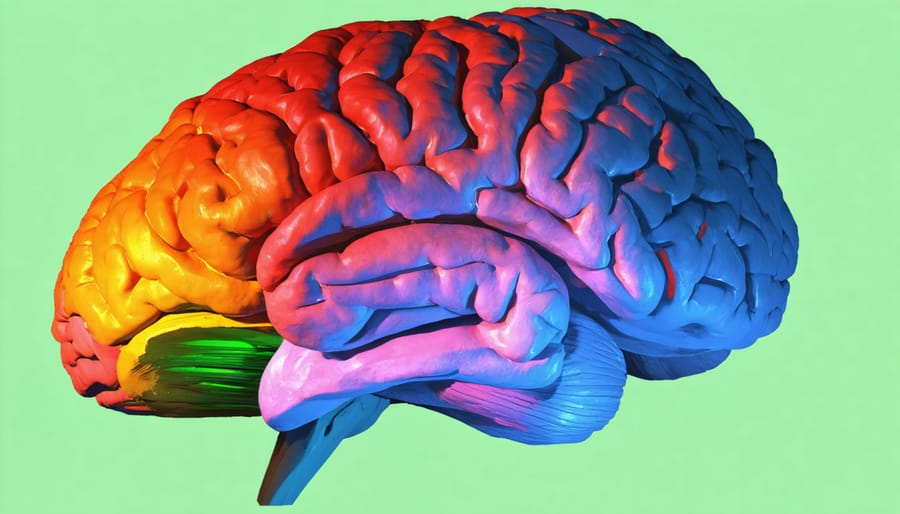Childhood trauma casts a long shadow, haunting survivors well into adulthood. The wounds inflicted by abuse, neglect, and dysfunction in our earliest years can fester beneath the surface, shaping our thoughts, emotions, and behaviors in profound and often destructive ways. Like a twisted foundation, childhood trauma can destabilize the very architecture of our minds, setting the stage for a lifetime of psychological struggle.
Studies have consistently shown that adverse childhood experiences dramatically increase the risk of mental health disorders such as depression, anxiety, PTSD, and substance abuse. The scars of childhood trauma can manifest as chronic feelings of shame, worthlessness, and mistrust that sabotage relationships and self-esteem. Survivors often find themselves trapped in cycles of self-destructive behavior, reenacting their trauma through dysfunctional partnerships and maladaptive coping mechanisms.
Yet the impact of childhood trauma is not a life sentence. With awareness, support, and evidence-based interventions, it is possible to heal the deep-seated wounds of the past and build resilience for the future. By shining a light on this critical public health issue, we can empower survivors to break free from the shadows of trauma and reclaim their right to emotional wellbeing. The journey may be long, but with knowledge comes hope—and the possibility of transformation.
Understanding Childhood Trauma

Adverse Childhood Experiences (ACEs)
The groundbreaking Adverse Childhood Experiences (ACEs) study, conducted by the Centers for Disease Control and Prevention and Kaiser Permanente in the late 1990s, revealed a powerful link between childhood adversity and health problems later in life. The study asked participants about their exposure to ten types of adverse experiences before age 18, such as abuse, neglect, and household dysfunction. The findings were striking: the more ACEs a person had, the higher their risk for a wide range of physical and mental health issues in adulthood, including depression, anxiety, substance abuse, heart disease, and even early death.
The ACEs study shed light on the long-lasting impact of childhood trauma and stress on the developing brain and body. It showed that adverse experiences during critical developmental stages can alter brain structure and function, leading to a heightened stress response and increased vulnerability to mental health problems. The study also highlighted the importance of early intervention and support for children who have experienced trauma, as well as the need for trauma-informed care in healthcare and social services.
The Developing Brain and Trauma
Exposure to trauma during childhood can profoundly impact the developing brain, altering its structure and function. The brain is most vulnerable to the effects of trauma during critical developmental periods, such as infancy and early childhood. When a child experiences chronic stress or trauma, their brain’s stress response systems become overactive, leading to heightened levels of stress hormones like cortisol. This constant state of hyperarousal can disrupt the development of neural pathways responsible for emotional regulation, learning, and memory. As a result, children who have experienced trauma may struggle with managing their emotions, forming healthy relationships, and learning in school. Moreover, the impact of childhood trauma on brain development can persist into adulthood, increasing the risk of mental health challenges such as depression, anxiety, and post-traumatic stress disorder (PTSD). Understanding the neurobiological effects of trauma is crucial for developing effective interventions and support systems that promote healing and resilience in children who have experienced adversity.

Childhood Trauma’s Long Shadow
Anxiety and Depression
Childhood trauma can have a profound impact on an individual’s mental health, particularly when it comes to anxiety and depression. Studies have consistently shown that individuals who experienced traumatic events during childhood, such as abuse, neglect, or household dysfunction, are at a significantly higher risk of developing these disorders later in life.
Trauma can disrupt the brain’s normal development, leading to changes in neurobiology that make a person more vulnerable to stress and emotional dysregulation. This, in turn, can manifest as anxiety disorders, characterized by excessive worry, fear, and panic attacks, or depression, marked by persistent feelings of sadness, hopelessness, and loss of interest in activities.
Moreover, childhood trauma can lead to the development of negative thought patterns and beliefs about oneself, others, and the world. These maladaptive cognitions can fuel anxiety and depression, making it difficult for individuals to cope with life’s challenges and maintain healthy relationships.
It’s crucial for parents, teachers, and healthcare professionals to recognize the signs of childhood trauma and its potential long-term effects on mental health. By providing early intervention, support, and treatment, we can help mitigate the impact of trauma and promote resilience in those who have experienced adversity during their formative years.
PTSD and Complex Trauma
Severe or prolonged childhood trauma can have a profound impact on adult mental health, potentially leading to post-traumatic stress disorder (PTSD) or complex trauma. PTSD is characterized by intrusive memories, nightmares, avoidance of trauma reminders, and hypervigilance. Children who experience ongoing abuse, neglect, or household dysfunction may develop complex trauma, which can affect their emotional regulation, self-concept, and relationships.
Symptoms of complex trauma in adulthood may include difficulty trusting others, chronic feelings of shame or guilt, dissociation, and self-destructive behaviors. These individuals may struggle with forming healthy attachments and have a higher risk of revictimization. It’s essential for those who have experienced childhood trauma to seek support from mental health professionals who specialize in trauma-informed care.
Therapy approaches such as cognitive-behavioral therapy (CBT), eye movement desensitization and reprocessing (EMDR), and dialectical behavior therapy (DBT) can be effective in treating PTSD and complex trauma. Building a strong support system, practicing self-care, and developing healthy coping mechanisms are also crucial for healing and resilience. With the right support and resources, it is possible to overcome the long-lasting effects of childhood trauma and lead a fulfilling life.
Relationship Difficulties
Childhood trauma can significantly impact an individual’s ability to form healthy relationships in adulthood. Early experiences of abuse, neglect, or instability can lead to the development of insecure attachment styles, such as anxious, avoidant, or disorganized attachment. These attachment patterns can manifest in adult relationships as a fear of abandonment, difficulty trusting others, or a tendency to avoid emotional intimacy. Survivors of childhood trauma may struggle with setting healthy boundaries, communicating their needs effectively, or maintaining stable, long-term relationships. They may also be more prone to entering abusive or toxic relationships due to a distorted sense of what constitutes a healthy partnership. However, it is important to note that healing from childhood trauma and developing secure attachment is possible through therapy, self-reflection, and supportive relationships. By addressing the root causes of their relationship difficulties and learning new coping strategies, survivors can build the skills necessary to cultivate loving, fulfilling connections with others.
Healing is Possible

Trauma-Informed Therapy
For adults grappling with the lingering effects of childhood trauma, there are several evidence-based therapeutic approaches that can help. Cognitive-behavioral therapy (CBT) is a widely used method that focuses on identifying and changing negative thought patterns and behaviors. Through CBT, individuals learn coping strategies and gain a more balanced perspective on their experiences. Eye Movement Desensitization and Reprocessing (EMDR) is another effective treatment that helps the brain process traumatic memories in a healthier way. During EMDR sessions, a therapist guides the client through specific eye movements while recalling the traumatic event, which can reduce the emotional distress associated with the memory. Other beneficial therapies include mindfulness-based approaches, art therapy, and group therapy. Seeking professional help is a courageous step towards healing and growth. With the right support and tools, it is possible to work through the pain of the past and build a more resilient, fulfilling future. Remember, recovery is a journey, and every small step forward is a victory worth celebrating.
Building Resilience
Building resilience is crucial for those who have experienced childhood trauma. Cultivating supportive relationships is one key strategy, as having a strong network of friends, family, or mentors who offer love, understanding, and encouragement can provide a sense of safety and belonging. Practicing self-care is another essential component of resilience. This involves engaging in activities that promote physical, emotional, and mental well-being, such as exercise, healthy eating, mindfulness, and pursuing hobbies or interests.
Finding meaning and purpose in life can also foster resilience. This may involve setting goals, volunteering, engaging in creative pursuits, or connecting with something larger than oneself, such as nature, spirituality, or a cause one feels passionate about. By focusing on personal growth, helping others, and contributing to the world in a positive way, individuals can develop a sense of empowerment and hope. Remember, building resilience is a journey, and seeking professional help when needed is a sign of strength. With support, self-compassion, and a commitment to personal growth, it is possible to heal from childhood trauma and lead a fulfilling life.
Conclusion
In conclusion, childhood trauma can have a profound and lasting impact on adult mental health. From increased risk of anxiety, depression, and PTSD to difficulties with relationships and self-esteem, the effects of early adversity can permeate many aspects of life. However, it’s important to remember that healing is possible. With the right support, therapy, and coping strategies, survivors of childhood trauma can learn to manage their symptoms, build resilience, and lead fulfilling lives.
If you or someone you know is struggling with the impact of childhood trauma, it’s crucial to seek help. Reaching out to a mental health professional, joining a support group, or confiding in a trusted friend or family member can be the first steps towards recovery. Remember, you are not alone, and your experiences do not define you. With compassion, understanding, and the right resources, it is possible to heal from the wounds of the past and create a brighter future. By raising awareness about the impact of childhood trauma and promoting access to mental health services, we can work towards a world where every child has the opportunity to thrive.







